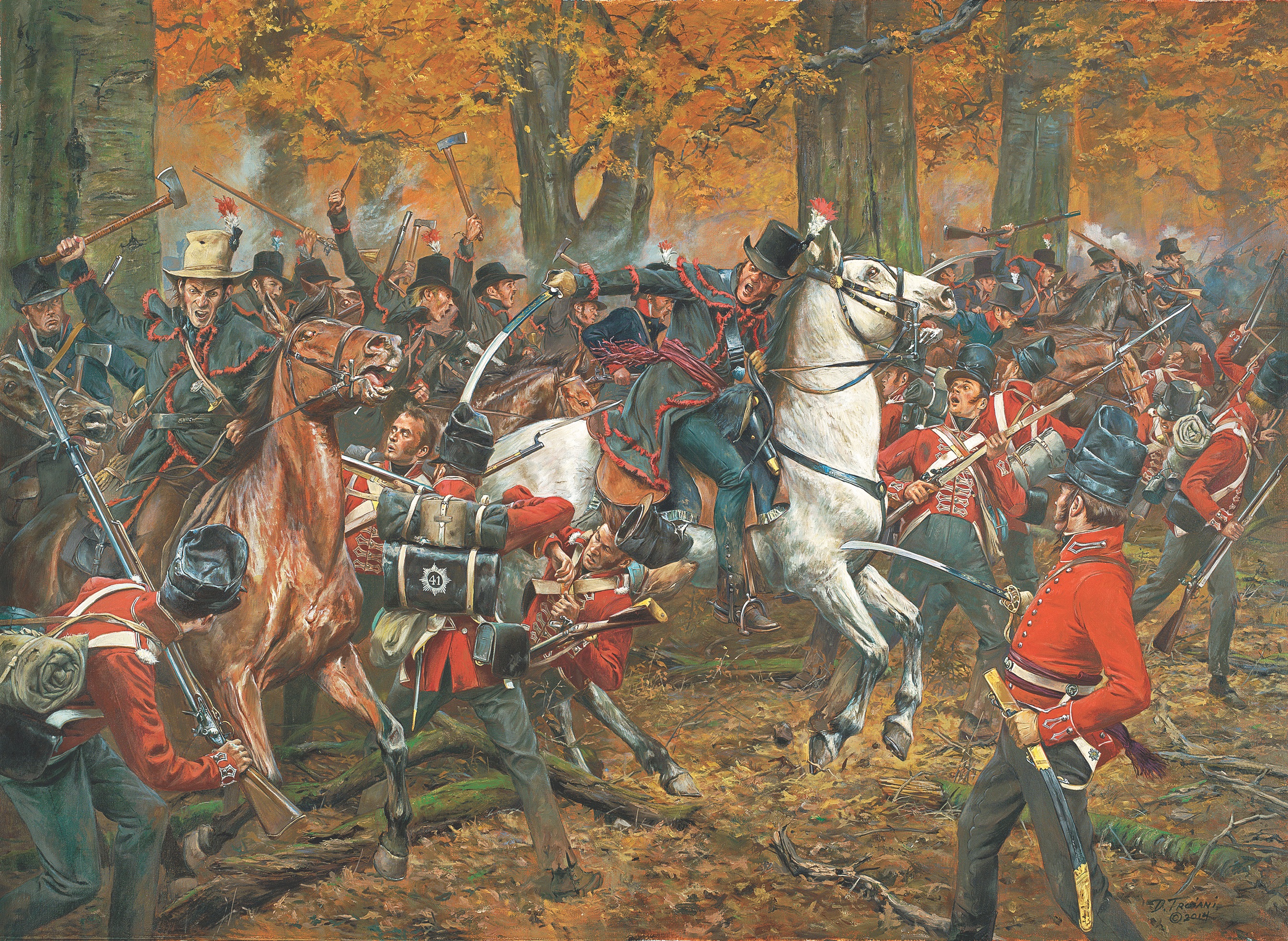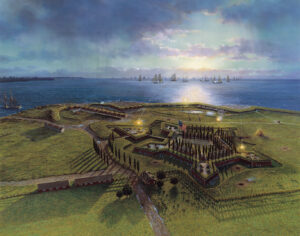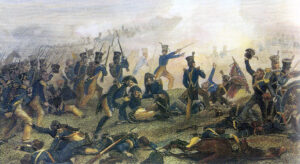While Americans’ recollections of the War of 1812 include the celebrated victories over British invaders at Fort McHenry, Md., and New Orleans, they are less prone to remember the failed invasions of British North America (present-day Canada). Among the most humiliating U.S. defeats came in battle along the St. Lawrence River at a place called Crysler’s Farm.
In 1813 U.S. Secretary of War John Armstrong Jr. conceived a two-pronged invasion of Lower Canada (present-day Quebec). Maj. Gen. James Wilkinson was to boat 8,000 troops down the St. Lawrence from Sackett’s Harbor, N.Y., on the northeast shore of Lake Ontario, and rendezvous with a 4,000-man force under Maj. Gen. Wade Hampton marching north from Plattsburgh, New York. Their objective was Montreal.
The scheme went awry from the outset. In September both Armstrong and Wilkinson fell ill, leading the secretary to delegate command to Wilkinson. That didn’t sit well with Hampton, who loathed the latter to the point of refusing to communicate directly with him. Hampton may have had good reason. A former commanding general of the U.S. Army, Wilkinson had slimed his way through multiple courts-martial for a variety of offenses.
On October 18 Hampton moved north along the Châteauguay River only to have his 1,400 New York militiamen balk at fighting people they saw as friends. The general and his 2,600 Regulars pushed on to the confluence of the Châteauguay and English rivers, where they encountered 1,500 French Canadian Voltigeurs, other local militias and Mohawk warriors under Lt. Col. Charles de Salaberry. The Battle of the Châteauguay, on October 26, ended in defeat for Hampton, who withdrew to Plattsburgh and tendered his resignation, while Salaberry became a Canadian folk hero.
Meanwhile, on October 17, Wilkinson and his 8,000 men left Sackett’s Harbor and boated down the St. Lawrence. The British sent a 650-man force downriver from Kingston to harass the Americans. Its New York–born commander, Lt. Col. Joseph Wanton Morrison, had fought in the Netherlands before returning to North America as commander of the 2nd Battalion, 89th (Princess Victoria’s) Regiment of Foot. While chasing Wilkinson, his force drew eager local militiamen and Mohawk warriors, its ranks swelling to near 900.
Late on November 10, after enduring a day of British fire, Wilkinson’s main body encamped along the river at Cook’s Tavern. Behind him, Morrison’s men bedded down at John Crysler’s farm, within 2 miles of the American rear guard.
At dawn on November 11, British gunboats fired on Wilkinson’s camp, while inland American scouts fired on a sniping Mohawk, prompting panicked Canadians to raise the alarm. Soon both forces were on the alert. At midmorning Wilkinson, resolving to eliminate the enemy force hectoring his rear guard, sent Brig. Gen. John Parker Boyd with 2,500 infantrymen and dragoons to deal with the annoyance.
Despite being outnumbered more than 2-to-1, Morrison chose to fight. At center were his 500 regulars, supported by two 6-pounder cannons. Anchored against the river, his right flank comprised light and grenadier companies and a third 6-pounder. In woods to the left the Voltigeurs, other militiamen and two-dozen Indians took up skirmishing positions.
Wilkinson opened the battle with an infantry thrust around the British left that drove the Canadians a mile back through the forest. As the Americans emerged from the woods, however, the well-drilled British loosed a withering series of volleys that drove the attackers to cover.
Meanwhile, a separate American force led by Brig. Gen. Leonard Covington crossed a gully to an open field and were met by a line of soldiers clad in gray. Beneath the gray greatcoats, however, were the red coats with green facings of Morrison’s 89th Foot. Covington was mortally wounded in their first volley, and when his second-in-command fell dead moments later, the brigade fell into disorder. Despite a brief rally by U.S. artillery, by 4:30 nearly all the Americans were in retreat, and by dusk the British had ceased pursuit
In this rare pitched battle of the War of 1812 the British lost 31 killed and 148 wounded, the Americans 102 dead, 237 wounded and 120 captured. On November 12, Wilkinson held a council of war, which unanimously agreed to end the ill-conceived campaign.
Today an 1895 commemorative obelisk marks the national historic site of “The Battle That Saved Canada,” 5 miles downstream from present-day Morrisburg, Ontario. Open daily each July and August, the on-site visitor center includes an interactive battlefield model and map, an audiovisual presentation, soldier dioramas and a panoramic mural highlighting the fight’s climax. Admission is free.





